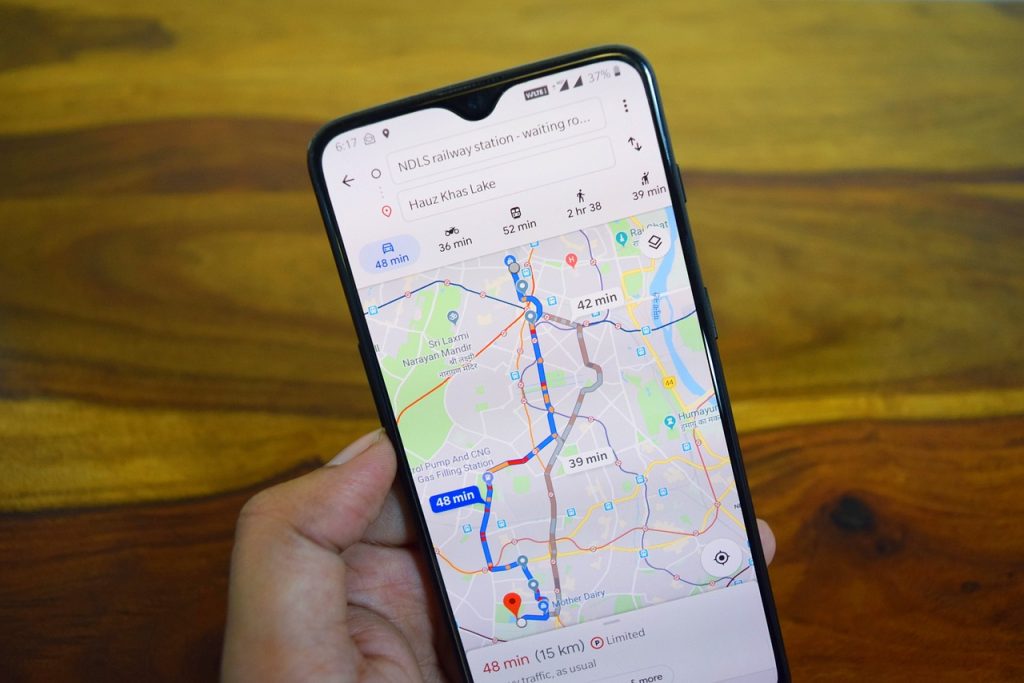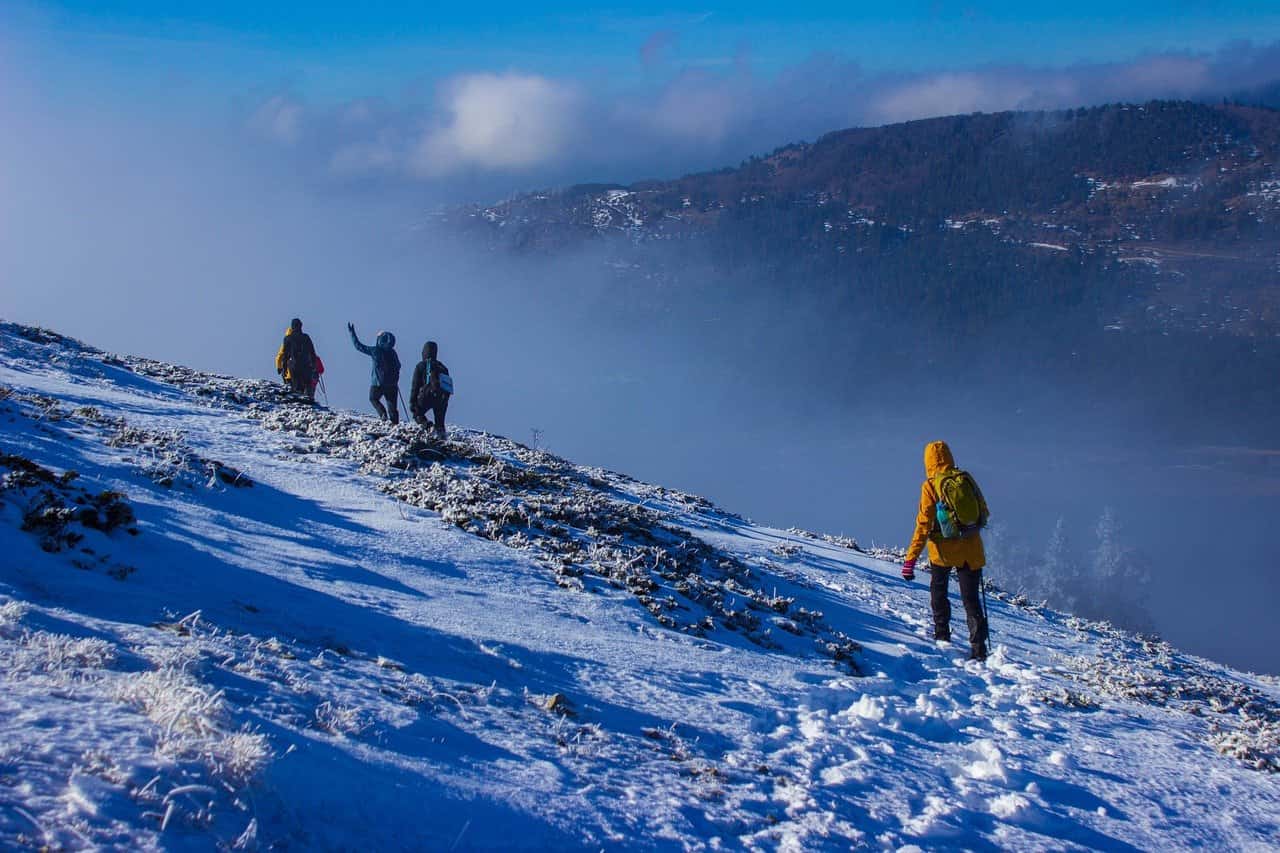Whether you’re an experienced hiker or just starting out, having the right tools can make all the difference in your outdoor adventures.
One of the most valuable resources for hikers today is mobile apps that can help you find local trails, navigate challenging terrains, and enhance your overall hiking experience. In this article, we’ll explore some of the best hiking apps available, covering everything from trail discovery to safety and fun extras.
1. The Hiking Project App
Overview: The Hiking Project App is an extensive trail database that offers detailed information on over 100,000 trails worldwide. Developed by REI, this app provides users with maps, trail reviews, elevation profiles, and photos from other hikers.
Features:
- Offline Maps: Download trail maps to use offline, so you never lose your way even when out of cell service.
- Trail Descriptions: Get detailed descriptions, difficulty ratings, and trail conditions to help you choose the right hike for your skill level.
- Community Contributions: Read reviews and see photos shared by fellow hikers to get a better idea of what to expect.
Best For: Hikers seek a comprehensive and reliable resource for discovering new trails and planning hikes with detailed information.
|
Pros |
Cons |
| Free and Detailed Maps: Offers free access to detailed topographic maps and trail descriptions. | Limited Global Coverage: Primarily focuses on the U.S., with less comprehensive coverage internationally. |
| User-contributed Content: Includes user-uploaded routes, photos, and reviews, providing diverse perspectives on trails. | Inconsistent Information: Some trail data may be outdated or less accurate due to reliance on user submissions. |
| Offline Access: Allows downloading maps for offline use, ideal for remote areas with no cell signal. | |
| Community-Driven: Encourages community involvement in updating and maintaining trail data. |
2. AllTrails Hiking App
Overview: AllTrails is one of the most popular hiking apps, known for its vast database of trails and user-friendly interface. It’s a go-to app for finding local trails, tracking your hikes, and sharing your outdoor experiences.
Features:
- Trail Finder: Search for trails by location, difficulty, length, and user ratings.
- GPS Tracking: Track your route in real-time, and monitor your speed, elevation gain, and distance covered.
- Custom – Maps: Download maps for offline use and customize your hiking route by adding waypoints.
Best For: Hikers who want an easy-to-use app for finding nearby trails and tracking their hikes.
|
Pros |
Cons |
| Extensive Trail Database: Offers a vast collection of trails worldwide, with detailed information on difficulty, length, elevation, and user reviews. | Subscription Cost: Many features, including offline maps, are locked behind a premium subscription. |
| Customizable Filters: Allows filtering trails by difficulty, length, elevation gain, and more, to find the perfect hike. | Mixed Accuracy: Some user-generated content may vary in accuracy, leading to potential discrepancies in trail details. |
| Offline Maps: Available with a premium subscription, enabling offline access to trail maps. | |
| Social Features: Includes the ability to share hikes, create custom lists, and connect with other hikers. |
3. Wikiloc Hiking App
Overview: Wikiloc offers a global trail database that includes hiking, cycling, and many other outdoor activities. It’s perfect for adventurers who want to explore off the beaten path.
Features:
- Global Coverage: Access over 24 million trails worldwide, with detailed GPS tracks shared by the community.
- Offline Navigation: Download trail maps to use offline and navigate without a data connection.
- Share Your Adventures: Record your trails and share them with the Wikiloc community, complete with photos and descriptions.
Best For: Hikers who enjoy exploring less-known trails and sharing their own outdoor experiences with others.
|
Pros |
Cons |
| Global Coverage: Offers trails from around the world, making it a versatile option for international hikers. | Subscription for Full Features: Advanced features, including offline maps, require a subscription. |
| User-Generated Content: Includes routes, photos, and waypoints shared by users, fostering a community-driven experience. | Varying Trail Quality: User-generated content can result in inconsistent trail quality and accuracy. |
| Offline Maps: Allows downloading routes and maps for offline use, even in remote areas. | |
| Wide Range of Activities: Supports not just hiking, but also cycling, running, and other outdoor activities. |
4. Gaia GPS Hiking App
Overview: Gaia GPS is a powerful mapping app favored by serious hikers and outdoor enthusiasts. It offers topographic maps, satellite imagery, and a range of tools for planning and navigating hikes.
Features:
- Topo Maps: Access detailed topographic maps, including USGS and NOAA charts, perfect for backcountry navigation.
- Route Planning: Create custom routes, mark waypoints, and measure distances and elevations.
- Weather Overlays: View current weather conditions and forecasts on your map.
Best For: We are experienced hikers and backpackers who need detailed maps and robust navigation tools for remote adventures.
|
Pros |
Cons |
| Advanced Navigation Tools: Provides detailed topographic maps, satellite imagery, and weather overlays for precise navigation. | Subscription-Based: Full access to maps and features requires a subscription, which may be costly for some users. |
| Offline Access: Allows downloading maps for offline use, essential for backcountry and remote hiking. | Steep Learning Curve: The app’s advanced features can be overwhelming for beginners. |
| Customizable Maps: Offers a wide range of map layers, including public lands, forest roads, and trails, allowing for highly customizable navigation. | |
| Tracking and Waypoints: Enables real-time tracking of your hike and the ability to mark waypoints. |
5. Seek by iNaturalist Hiking App
Overview: Seek by iNaturalist is a unique app that combines hiking with nature exploration. It helps you identify plants, animals, and fungi you encounter on the trail using your smartphone camera.
Features:
- Nature Identification: Instantly identify species by taking a photo with your phone.
- Challenges: Participate in challenges to observe and identify as many species as possible in different categories.
- Learning Tool: Perfect for families and nature lovers who want to learn more about the natural world.
Best For: Hikers who enjoy learning about the flora and fauna they encounter on their journeys.
|
Pros |
Cons |
| Nature Identification: Automatically identifies plants, animals, and fungi using your phone’s camera, making it a great tool for learning about nature on hikes. | Limited to Identification: Primarily focused on species identification, so it lacks traditional hiking navigation and mapping features. |
| Educational: Provides information about the species you encounter, fostering a deeper connection with nature. | Requires Internet: Identification features may require an internet connection, limiting use in remote areas. |
| Child-Friendly: Designed to be user-friendly for all ages, encouraging kids and families to explore nature together. | |
| Free: No cost for the app, making it accessible to everyone. |
6. FarOut Guides (formerly Guthook Guides) Hiking App
Overview: FarOut Guides, previously known as Guthook Guides, is a popular app for long-distance hikers and thru-hikers. It provides detailed trail guides for major trails like the Pacific Crest Trail, Appalachian Trail, and many others.
Features:
- Comprehensive Trail Guides: Get detailed maps, water sources, campsites, and resupply points for long-distance trails.
- User-Generated Updates: Access real-time updates from other hikers on trail conditions and water sources.
- Offline Functionality: All maps and information can be downloaded for offline use, essential for remote hiking.
Best For: Thru-hikers and long-distance backpackers who need detailed information and up-to-date trail conditions.
|
Pros |
Cons |
| Thru-Hiker Focused: Designed specifically for long-distance hikes, including the Pacific Crest Trail, Appalachian Trail, and more. | Expensive: Purchasing individual trail guides can be costly, especially if you plan to hike multiple long-distance trails. |
| Detailed Trail Information: Provides detailed waypoints, water sources, campsites, and user comments. | Niche Use: Primarily aimed at thru-hikers, so it may be less useful for casual or day hikers. |
| Offline Maps: Fully functional offline, which is critical for long stretches without cell service. | |
| Community Feedback: User-generated comments offer real-time updates on trail conditions and resources. |
7. Weather Hiking Apps
Overview: Weather apps are crucial for planning a safe and enjoyable hike. Accurate weather forecasts can help you prepare for changing conditions and avoid hazardous situations.
Features:
- AccuWeather: Provides hyper-localized weather forecasts, including hourly and minute-by-minute updates.
- Weather Underground: Offers detailed weather data from personal weather stations, including trail-specific forecasts.
- Dark Sky: Known for its accurate short-term forecasts and precipitation alerts.
Best For: Any hiker who needs reliable and detailed weather information to plan their hikes.
|
Pros |
Cons |
| Real-Time Weather Updates: Provide current weather conditions and forecasts, which are crucial for planning hikes. | Internet Dependent: Requires a connection for the most up-to-date information, which may not be available in remote areas. |
| Alerts: Some apps offer severe weather alerts, helping you avoid dangerous conditions. | Accuracy Varies: Weather predictions can sometimes be inaccurate, especially in mountainous regions. |
| Specialized Forecasts: Certain apps provide mountain-specific weather, which is more accurate for high-altitude hikes. |
8. Hiking Safety App
Overview: Safety should always be a top priority when hiking. Several apps are designed specifically to enhance your safety on the trail by providing emergency tools, first aid information, and more.
Features:
- Cairn: This app tracks your location and notifies your emergency contacts if you don’t return from your hike as planned. It also provides cell coverage maps for trails.
- Red Cross First Aid: Offers simple step-by-step instructions for handling common first aid situations that may arise during your hike.
Best For: Hikers who want to ensure they are prepared for emergencies and stay safe on the trail.
|
Pros |
Cons |
| Emergency Features: This may include SOS functionality, emergency contacts, and location sharing, which are essential for safety. | Limited Functionality: Safety apps may lack comprehensive navigation or mapping features, focusing solely on safety aspects. |
| Trail Information: Some apps provide real-time updates on trail conditions and hazards. | Subscription Costs: Some safety features may require a paid subscription. |
| Navigation Tools: May include GPS tracking and offline maps to help prevent getting lost. |
9. Fun Hiking Apps
Overview: Sometimes, it’s nice to add a little extra fun to your hiking experience. These apps offer features that enhance your hike, whether through photography, storytelling, or gamification.
Features:
- Geocaching: Turn your hike into a treasure hunt by searching for hidden geocaches along your route.
- PeakFinder: Identify mountain peaks around you using augmented reality, adding an educational twist to your hike.
Best For: Hikers looking to add an element of fun and discovery to their outdoor adventures.
|
Pros |
Cons |
| Engagement: Gamifies hiking experiences with challenges, badges, and rewards, making hikes more enjoyable. | Limited Utility: Focused more on fun and engagement than serious navigation or safety, so it may not be ideal for planning hikes. |
| Educational: Often includes features that teach about local flora, fauna, or geography, enhancing the hiking experience. | Internet Required: Some features may require an internet connection, limiting use in remote areas. |
| Family-Friendly: Encourages children and families to get involved in outdoor activities through interactive features. |
10. Relive Hiking App
Overview: Relive turns your hikes into shareable 3D video stories, making it easy to relive and share your adventures with friends and family.
Features:
- 3D Video Maps: Create a 3D video of your hike that shows your route, photos, and key stats like distance and elevation gain.
- Photo Integration: Add photos to your Relive videos to capture the highlights of your hike.
- Social Sharing: Easily share your Relive videos on social media or with friends.
Best For: Hikers who love to document their adventures and share them in a visually engaging way.
|
Pros |
Cons |
| 3D Route Visualization: Creates a 3D video of your hike, showing your route on the map along with photos and stats. | Subscription for Full Features: Some features, like higher-quality video exports, require a subscription. |
| Shareable Content: Easy to share your hiking experiences with friends or on social media. | Not a Navigation Tool: More focused on post-hike visualization than real-time navigation or planning. |
| Simple Interface: User-friendly and easy to use for hikers of all levels |
Conclusion
With these hiking apps in your pocket, you’ll be well-equipped to discover new trails, navigate challenging terrains, stay safe, and even add a little extra fun to your hikes. Whether you’re heading out on a local trail for a day hike or embarking on a multi-day backpacking adventure, these apps will enhance your experience and help you make the most of your time outdoors. Happy hiking!









